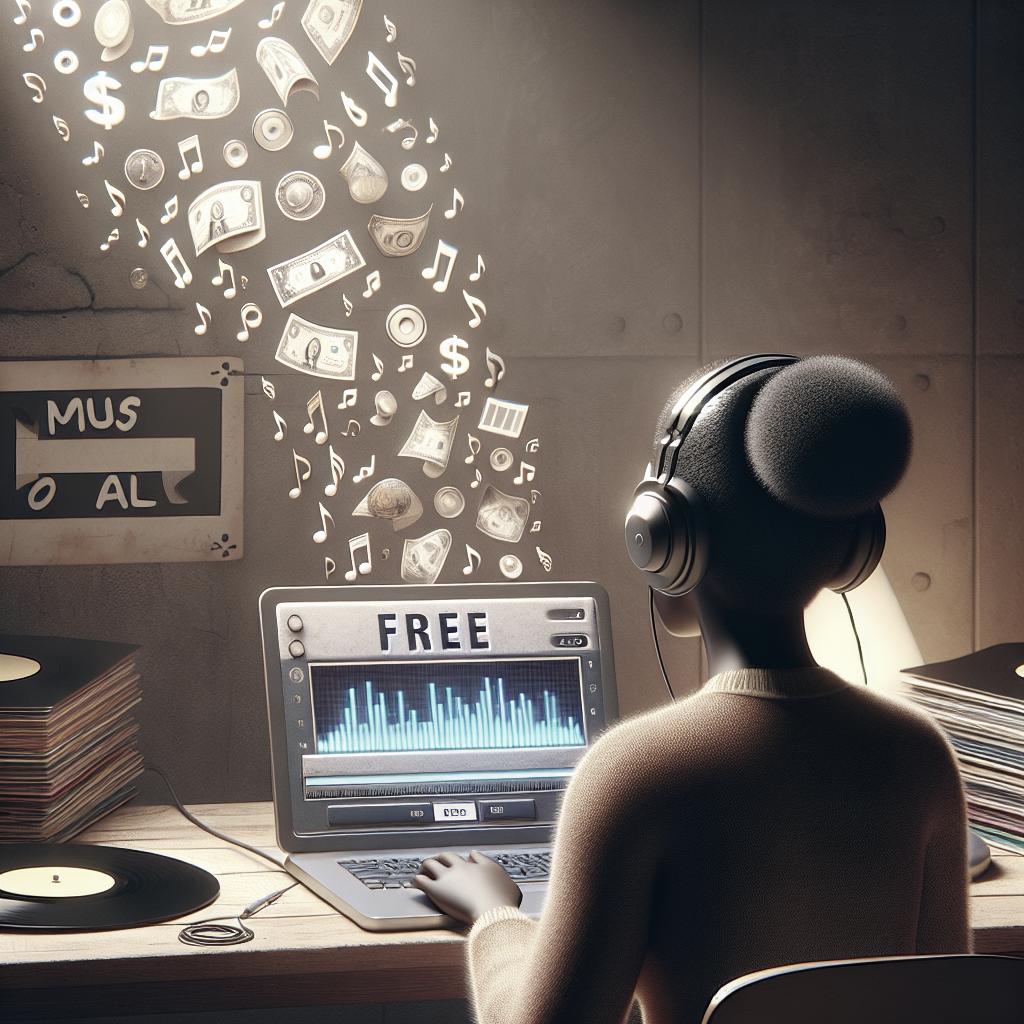“`html
Understanding Royalty-Free Music: A Comprehensive Guide
In the vibrant realm of music, the terms “royalty-free” and “copyright-free” often echo in discussions about legal music use. However, their meanings and implications can sometimes be misunderstood. This blog post embarks on a journey to unravel the nuances of royalty-free and copyright-free music, explaining their differences, applications, and the legal landscapes they navigate. With detailed insights into ownership, quality, and availability, you’ll be empowered to make informed choices for your creative projects. In exploring these concepts, we’ll shed light on the benefits and considerations for content creators seeking harmonious compositions that suit their narratives.
Is Royalty-Free the Same as Copyright-Free?
A common misconception is that royalty-free music equates to copyright-free music. However, there is a fundamental distinction between these two terms. Royalty-free implies that once a music license is purchased, there are no additional fees each time the music is used. It does not mean the music is devoid of copyright protection or ownership.
Copyright-free, on the other hand, suggests that music is not protected by copyright law at all. This means it is in the public domain, available for anyone to use freely. While royalty-free music still protects its creators’ rights, the ease of use and reduced cost attract content creators across various industries who seek legal background scores.
What is Royalty-Free Music?
Royalty-free music is a type of music licensing that allows the purchaser to pay a one-time fee for an underlining duration of usage. This means after the initial purchase, the user does not need to pay any additional royalties for each subsequent use. This type of licensing is particularly advantageous for creators involved in projects that involve repetitive or wide distribution, such as in film, television, or online content.
Many platforms provide extensive libraries of royalty-free music, offering a range of genres and styles. The convenience of this model lies in not having to clear rights multiple times, granting content creators legal privileges while supporting musicians through upfront purchases.
What is Copyright-Free Music?
Copyright-free music is music absent of copyright restrictions, generally considered to be in the public domain. This type of music is free for anyone to use without licensing fees, as the original copyright has expired or was never applied.
The use of copyright-free music can be attractive due to its cost-free nature. However, creators must ensure they are sourcing truly copyright-free content, as a misinterpretation can lead to legal complications. Proper due diligence is essential to confirm that the music is indeed free from copyright constraints.
The Differences Between Royalty-Free vs. Copyright-Free Music
Ownership and Usage Rights
The primary difference between royalty-free and copyright-free music lies in ownership and usage rights. Royalty-free music still entails copyright ownership by the creator, which means users must comply with the licensing agreement’s terms after purchase. In contrast, copyright-free music does not have an owner, and anyone can use it without restriction.
Quality and Originality of Music
Royalty-free music can often offer high-quality original compositions as it encompasses music created by professional musicians and composers. These tracks frequently provide unique and tailored offerings suitable for specific creative needs.
Conversely, copyright-free music might be limited in diversity and professional standard, reflecting music that has been in the public domain for years. Those seeking contemporary sounds might find royalty-free options more aligned with current trends.
Availability and Accessibility
Both royalty-free and copyright-free musics are accessible online; however, they differ in abundance. Royalty-free music platforms often boast large libraries, frequently updated to provide fresh content for users.
Meanwhile, copyright-free music resources may not be as extensive, given that no new production enters the public domain regularly. Accessibility also comes in the form of the intuitive platforms that host royalty-free music, simplifying the search and download process.
How To Choose Between Copyright-Free vs. Royalty-Free Music
Consider the Purpose of Your Content
Determining which type of music suits your needs typically begins with the scope and purpose of your project. For professional pieces requiring modern, unique compositions, royalty-free music offers versatility and reliability.
If the project is non-commercial or you wish to explore classic or historic sounds, copyright-free music might serve you well by offering cost-free options.
Evaluate the Quality and Suitability of the Music
Ensuring the alignment of musical style and quality with your narrative is crucial. Sampling pieces from both royalty-free and copyright-free sources and assessing them against your project can help you discern the best fit.
Royalty-free music often offers a breadth of high-quality professional tracks, potentially elevating your work to a refined standard.
Assess the Legal and Ethical Implications of Using the Music
Using music involves respecting legal and ethical frameworks. While royalty-free models incorporate these considerations by design, those exploring copyright-free music must be astute in verifying public domain status to avoid inadvertent copyright violations.
Consideration of ethical implications is also vital when dealing with renditions of any culturally significant or traditional pieces.
Music Licensing: A Third Option for Content Creators
For those seeking another pathway, music licensing presents a viable option. Licensing allows for specific usage rights, granting creators the opportunity to use commercially produced music through legal agreements.
This option often includes premium tracks from recognized artists and is fitting for projects with robust budgets or a targeted audience reach.
Final Thoughts
Finding the right music for your content can significantly impact its reception and effectiveness. Both royalty-free and copyright-free options present unique strengths and potential limitations. Knowledge and understanding are elemental in selecting the correct musical narrative that aligns with your creative vision and legal requirements.
| Aspect | Royalty-Free Music | Copyright-Free Music |
|---|---|---|
| Ownership | Retains creator’s copyright | No ownership, public domain |
| Cost | One-time fee | Free |
| Quality | High-quality, professional | Varied, often classical or historic |
| Usage Rights | Specified by license | No restrictions |
| Availability | Extensive libraries | Limited, depends on public domain |
“`


